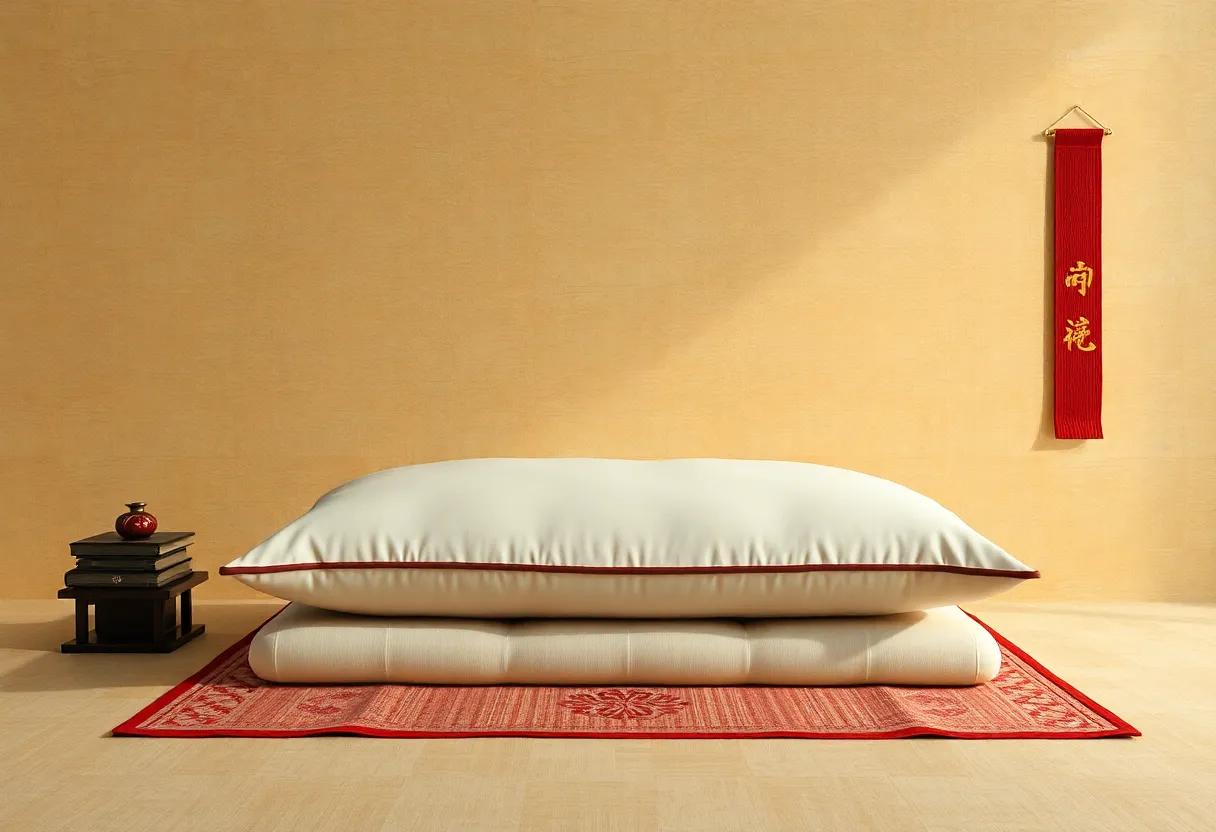In the vibrant tapestry of Japanese literature, few works shimmer as luminously as “The Pillow Book” by Sei Shonagon.Written during the heian period,this unique collection of essays,lists,and observations offers a rare glimpse into the life and thoughts of a woman navigating the complexities of the imperial court. In “‘,” readers are invited to explore the nuanced interplay of aesthetics and emotion that define Shonagon’s prose. This review embarks on an intellectual journey through the countless facets of her work, illuminating the timelessness of her insights while contextualizing her artistry within the cultural milieu of her time. As we turn the pages together, we will unravel not only the elegance of her observations but also the deeper truths that resonate across centuries, proving that the heart of human experience—embellished with wit, wisdom, and a touch of whimsy—transcends the boundaries of time and place.
Exploring the Rich Tapestry of Heian Era Culture in Sei Shonagon’s Masterpiece
At the heart of Sei Shonagon’s *The Pillow Book* lies an intricate interplay of aesthetics and daily life, painting a vivid portrait of the Heian period’s cultural milieu. Shonagon, with her sharp wit and keen observations, invites readers into a world of refined taste and subtle beauty.Her work not only reflects her personal musings but also captures the nuances of courtly life, revealing a society where elegance reigned supreme. Through her lists and essays, she celebrates the little moments—like the arrival of spring, the first snow, or the gentle sounds of a lute—reminding us that beauty often lies in the ephemeral.
The brilliance of Shonagon’s writing can also be seen in her use of rich imagery and poetic forms, showcasing the importance of nature and seasonal transitions in the era’s culture. She delineates the beauty of fleeting moments through carefully curated observations that resonate with the human experience. Key themes within her reflections include:
- Nature’s Ephemerality: emphasizing the transient beauty of blossoms and the passage of seasons.
- Courtly Love: Subtle expressions of affection and longing among the elite.
- Artistic Aesthetics: The meaning of calligraphy, poetry, and the visual arts in daily life.
To grasp the full essence of the Heian era, one must delve deep into Shonagon’s lens, where even the mundane transforms into the exquisite.
The Art of Observation: How Shonagon Captures Everyday Beauty
sei Shonagon, in her celebrated work, deftly invites readers into the lush tapestry of Heian-era Japan, illuminating the mundane with a remarkable eye for detail. Her writing unfolds like a delicate scroll, where each observation captures fleeting moments in nature, social interactions, and the changing seasons. Through her vivid descriptions, Shonagon transforms commonplace experiences into reflections of beauty, encouraging us to pause and consider the elegance woven into the fabric of daily life. As a notable example, she might describe the first blossoms of spring or the gentle sound of rain, reminding us that the simplest phenomena can evoke profound emotions and insights.
In her lists and musings, Shonagon offers a catalog of sensory delights that invites readers to fully engage with their surroundings. The delicate interplay of light and shadow, the vivid colors of a flower garden, or the melodious call of a distant bird become focal points for her appreciation. Here are some examples of her keen observations:
| Beauty in Nature | Everyday Moments |
| Delicate cherry blossoms falling | Children playing under a tree |
| The shimmer of mist over mountains | The laughter of friends during a gathering |
| The sound of wind rustling through bamboo | The aroma of a simple meal being prepared |
Through her artful observations, Shonagon cultivates an awareness that prompts us to look deeper into our environments, celebrating the small yet notable experiences that often pass unnoticed. This practice not only enriches her writing but also challenges us to embrace a similar perspective in our own lives,urging us to capture the sublime beauty woven into the ordinary.
A Study in Contrasts: Love and Loneliness in The Pillow Book
Sei Shonagon’s masterwork, “The Pillow Book,” stands as a testament to the myriad emotions that encompass the human experience, especially in its exploration of love and loneliness. The courtly setting of Heian Japan serves as both a backdrop and a character of its own,illustrating the contrasts between the vibrancy of romantic connections and the haunting silence of solitude. Within the delicate intricacies of her lists and musings,Shonagon captures the ephemeral nature of affection,portraying moments that are both tender and fleeting.Love, in her eyes, is like a cherry blossom—stunning and captivating, yet destined to fall. As readers, we are invited to witness her joyful romantic encounters side by side with her reflections on isolation, forming a compelling dichotomy that resonates across centuries.
Yet, it is in moments of solitude that her true introspection flourishes. The elegant deftness of Shonagon’s prose lays bare the loneliness that often shadows court life, subtly contrasting the laughter of companions with the deep sighs of an empty heart. Her lists of *Things that Give a Feeling of Originality* and *Things that are Not Convenient* reveal an acute awareness of the complexities of relationships and the poignant theater of social interactions. Here,one can find a rich tapestry woven from the threads of keen observation and personal experience. As she documents the vibrancy of moments shared and the weight of those spent in reflection,Shonagon paradoxically highlights that within loneliness lies the fertile soil from which profound insights and creativity can bloom.
The Poetic Language of ’The Pillow Book’ and Its Lasting Influence
Sei Shonagon’s mastery of language in The Pillow Book transcends mere narrative, weaving a rich tapestry of emotion and imagery that captivates readers even centuries later. Her use of vivid descriptions, evocative metaphors, and delicate observation creates a sensory experience that resonates with the heart and mind. Shonagon’s idiosyncratic lists, ranging from the whimsical to the profound, showcase her ability to infuse the mundane with poetry, painting each moment with an elegance that invites contemplation. As an example, her reflections on the beauty of nature or the intricacies of court life are not merely statements, but vehicles that transport the reader into her world, filled with vivid sights, sounds, and feelings.
Moreover, Shonagon’s lyrical style has influenced generations of writers, fostering a legacy that emphasizes the beauty of personal expression.Contemporary authors turn to her work for inspiration, and her poetic sensibilities can be observed in various forms of literature and art today. The essence of her writing reflects a timeless quality, inviting those who encounter it to consider the subtleties of human experience. The following table illustrates some of the key themes and stylistic elements that have emerged from shonagon’s work and their contemporary counterparts:
| Theme/Element | Shonagon’s Original Approach | Contemporary Reflection |
|---|---|---|
| Nature | Descriptive passages evoking seasons and landscapes | Nature poetry that reflects personal and societal connections |
| Lists | Personal, whimsical catalogues of thoughts and experiences | Modern prose and poetry featuring inventories of emotions and observations |
| Introspection | Personal musings and reflections on court life | Memoir writing that combines the personal with the universal |
Beautifully Structured: Analyzing Shonagon’s Unique Format and Style
Sei Shonagon’s work is a testament to the art of arrangement, with each section curated to evoke a specific mood or reaction. The brilliance of The Pillow Book lies not only in its content, but in its unique format that seamlessly blends prose with lists, anecdotes, and poetic interludes. This structure mirrors the beauty of the Heian court, where aesthetics were paramount. Shonagon’s use of lists—such as “Things That Make One’s Heart Beat faster”—serves to categorize experiences and emotions, allowing the reader to traverse the intricacies of her world, one delicate observation at a time. The work is a reflection of Shonagon’s keen insights,presented in an elegant format that reads both as a diary and a rich tapestry of cultural moments.
The interplay of vivid imagery and meticulous detail in her writing not only enhances the thematic depth but also highlights her unparalleled originality. While many literary forms prioritize narrative continuity, Shonagon’s fragmented yet cohesive approach invites readers to dwell on individual thoughts and sensations. Consider the following examples that illuminate her distinctive style:
| Examples | Stylistic Element |
|---|---|
| Beautiful things | Descriptive elegance |
| Keen observations | Introspective depth |
| Humorous anecdotes | Engaging relatability |
This meticulous craftsmanship not only showcases her literary talent but also serves to elevate the mundane into the magnificent, reminding us that even the simplest moments can resonate with profound beauty when observed through a discerning lens.
The Role of Nature: Embracing Seasonal Changes in Shonagon’s Prose
in Sei Shonagon’s exquisite tapestry of prose, nature unfolds like the chapters of a well-loved book, each season drapes her narrative in a different hue. The elegance of her observation stems from her profound connection with the ebbs and flows of the natural world, as she deftly intertwines the beauty of transient moments into the fabric of her writing. Spring, with its fleeting cherry blossoms, becomes a metaphor for the ephemeral nature of life, while autumn, dressed in hues of crimson and gold, invokes a sense of nostalgia. Her lyrical musings serve not only as a reflection of her surroundings but also as an exploration of the human experience, showing how our emotions are intrinsically linked to the changing seasons.
This intimate relationship with nature is further articulated through her lists, which brilliantly encapsulate the subtleties of her observations. Consider the following elements she often highlights:
- Winter’s chill: The stark beauty of snow and the warmth of cozy interiors.
- Summer’s vibrancy: The lush greenery and the resplendent festival of life.
- spring’s gentle renewal: The return of blossoms and the optimism they bring.
- Autumn’s farewell: The beauty of decay and reflection.
To encapsulate the essence of her engagement with nature, one can envision a seasonal table representing how Shonagon perceives each phase:
| Season | Element | Emotion |
|---|---|---|
| Spring | Cherry Blossoms | Hope |
| Summer | Lush Gardens | Joy |
| Autumn | Rustling Leaves | Nostalgia |
| Winter | Frosted Landscapes | Introspection |
Through these reflections, Shonagon implores her readers to embrace the cyclical nature of life, welcoming the lessons and beauty that each season brings forth.
Themes of Femininity and Power in The Pillow Book
Sei Shonagon’s “The Pillow Book” serves as a engaging tapestry woven with the intricate threads of femininity and power through its detailed vignettes of life in the Heian court. In this work, Shonagon elevates the status of women in a male-dominated society, depicting their influence and subtle forms of power. The elegance of women is highlighted not only through their attire and poised mannerisms but also through their intellect and creativity. Shonagon showcases how women navigate the complexities of court life with grace and cunning, often wielding their social skills and keen observations as tools of empowerment. In doing so, she challenges the conventional notions of femininity, portraying it as a source of strength rather than fragility.
Throughout her musings, Shonagon subtly critiques societal norms while celebrating the unique experiences of women. She illustrates this with lists and observations that reflect both personal inclination and cultural commentary.For instance, she catalogs her preferences and dislikes, delineating what she perceives as refined and unrefined, ultimately empowering women to assert their individuality.The following table encapsulates some of the motifs found in her reflections:
| Motifs | Descriptions |
|---|---|
| Beauty | Elegance in adornment and nature’s allure. |
| Intellect | Wit and observation as tools of influence. |
| Social Dynamics | Interactions that reveal power plays in relationships. |
| Nature | Connection to the natural world as a theme of femininity. |
in celebrating such themes, Shonagon crafts a narrative that transcends time, encouraging modern readers to reconsider the intersection of femininity and power. The pages of ”The Pillow Book” invite reflection on how these elements resonate within the context of contemporary society, illustrating that the quest for empowerment remains essential for women navigating both personal and societal landscapes.
Imagery that Inspires: Visual Landscapes Crafted in Shonagon’s Writings
Sei Shonagon’s masterful use of imagery transports readers to the refined world of Heian-era Japan, where nature and human experience intertwine seamlessly. Her descriptions evoke a vivid sense of place, where the subtle nuances of light and shadow play across landscapes, painting a picture that resonates with emotion and elegance. Consider her reflections on the changing seasons; Shonagon crafts scenes filled with delicate cherry blossoms, crimson maple leaves, and the gentle fall of snowflakes, each element contributing to a rich tapestry of sensory delight. She captures not just the visual,but the sensations and memories tethered to these moments,allowing readers to feel the crisp air of early mornings or the warmth of a sunlit afternoon.
In her lists and observations, Shonagon juxtaposes the beauty of nature with human thought and behavior, creating scenes that are both poetic and thought-provoking.As a notable example, her musings on an unexpectedly vibrant sunset or the haunting stillness of a moonlit night are contrasted with the mundane experiences of daily life, making every observation resonate on deeper levels. Her writings invite readers to engage with the world around them, seeing beauty not just in grand vistas but also in the simplicity of fleeting moments. Shonagon’s artistic vision establishes a powerful connection between the observer and the observed, encapsulating the elegance that blossoms through mindful appreciation of life’s transitory beauty.
Personal Reflections: How ‘The Pillow Book’ Mirrors Our Lives Today
exploring the intricate tapestry of Sei shonagon’s observations unveils subtle parallels to our contemporary experiences. In a world dominated by social media and the relentless pursuit of aesthetic perfection, her reflections on simple joys and fleeting moments resonate deeply. Much like Shonagon, we find ourselves curating our lives through the lens of personal taste, showcasing snippets of beauty in the ordinary. Today’s digital platforms serve as our own ‘pillow books,’ filled with daily musings, curated images, and fleeting inspirations. As we post snapshots of our lives, we echo her sentiments on the significance of ephemeral pleasures that make up the mosaic of existence.
Furthermore,the themes of introspection and observation present in Shonagon’s work highlight a universal human experience nonetheless of the era. The delight in documenting small details, from the beauty of cherry blossoms to the nuances of daily encounters, speaks to our inherent desire to connect with others. We too sift through the mundane to find meaning, be it through crafted prose, photography, or storytelling. The list-making and categorization she employs mirror how we navigate our identities in the modern landscape—mapping out preferences and sharing them with a vast audience. Ultimately, both her work and our lives serve as a testament to the enduring charm of reflection, reminding us that, amidst the chaos, there remains an elegance in the simple act of observation.
| Modern Echoes of Shonagon’s Insights | Examples |
|---|---|
| Curating beauty | Instagram aesthetic accounts |
| Documenting daily life | Personal blogs and vlogs |
| Finding joy in small moments | Mindfulness practices |
Bridging Past and Present: The Relevance of Shonagon’s Observations
Sei Shonagon’s keen observations in ‘The pillow Book’ transcend the boundaries of time, revealing the intricate tapestry of human experience that remains relevant today. As she meticulously catalogs her thoughts, from the beauty of the seasons to the subtleties of social interactions, she invites readers to savor the elegance in the mundane. This approach resonates deeply with contemporary readers, who find themselves navigating a world rife with distractions. In a time where instant gratification frequently enough overshadows reflection,her ability to pause and appreciate life’s small moments encourages us to reconnect with our surroundings. Some themes that echo through the centuries include:
- The importance of nature: Shonagon’s reverence for the changing seasons highlights our continuous need for harmony with the environment.
- Social dynamics: Her insights into human relationships encourage introspection about our own interactions.
- Aesthetic appreciation: The pursuit of beauty, whether in objects or experiences, remains a fundamental aspect of human nature.
Moreover, the structure of her work exemplifies a unique blend of personal reflection and cultural commentary, making it an invaluable resource for understanding the Heian era’s societal norms. Shonagon’s categorization of her thoughts not only provides an intimate glimpse into her world but also serves as a guide for readers today, prompting them to reflect on their own lives. The contrasting styles she employs—from list-making to prose—mirrors modern digital expression, where varied formats allow for deeper engagement with one’s thoughts and surroundings. This connection is further illustrated in the following table,showcasing key elements of Shonagon’s reflections and their modern counterparts:
| Shonagon’s Observations | Modern Relevance |
|---|---|
| Beauty in simplicity | Minimalism in design |
| Nature’s cycles | Environmental awareness movements |
| Social gatherings | Virtual connections and meet-ups |
A Literary Journey: Engaging with the Grand Themes of ‘The Pillow Book
Sei Shonagon’s The Pillow Book invites readers on an exquisite voyage through the nuanced intricacies of court life during Japan’s Heian period.The text not only serves as a personal diary but also operates as a cultural artifact,rich with observations of nature,beauty,and human interaction,each blended with a dash of wit and candor. Through her lists, essays, and musings, Shonagon captures the ephemeral moments that define the human experience, reflecting on themes of impermanence, elegance, and celebration. Her ability to articulate the subtleties of daily life — those fleeting interactions and natural phenomena — resonates deeply, reminding readers of the beauty nestled in the mundane.
At the very core of her writings is an exploration of contrasts, whether it be in her distinctions between beauty and ugliness, or the joys and sorrows of existence. Shonagon masterfully intertwines her personal reflections with broader themes, creating an intricate tapestry of thoughts. Consider her observations on the seasons, where she elegantly catalogues the transience of cherry blossoms alongside the awe-inspiring complexities of emotion. the following table encapsulates some of the grand themes and their representations within her work:
| Theme | Depiction |
|---|---|
| Beauty | Poetic descriptions of nature |
| Impermanence | Reflections on the fleeting moment |
| Social Commentary | Her observations on courtly life |
| Isolation | Personal musings on solitude and connection |
Emotional Resonance: The Undercurrents of Joy and Sorrow in Shonagon’s Work
In Sei Shonagon’s the Pillow Book, the delicate interplay of joy and sorrow unveils itself through nuanced observations and vivid imagery. Her reflections evoke a sense of bittersweet nostalgia, catalyzing an emotional resonance that remains timeless.As an example, her keen observations on the changing seasons create a tapestry of feelings, where moments of beauty are often intertwined with a transient sense of loss. Through rich descriptions, Shonagon captures the essence of fleeting joy—whether it’s the first blossom of cherry trees or the quietude of a snowy night—each instance reminds readers that joy is perpetually tinged with the ephemeral nature of life itself.
Furthermore, the dichotomy of personal experience and the shared human condition shines through her seemingly simple lists. In her musings, she contrasts the mundane and the remarkable, inviting readers to reflect on their own moments of happiness and despair. Consider her observations on the effects of a beautifully arranged meal or the soft fall of raindrops; these everyday occurrences resonate deeply, evoking universal emotions that connect us all. Her lists become a lens through which we perceive the coexistence of delight and melancholy, allowing us to embrace the full spectrum of our experiences.
Cultural Significance: How ‘The Pillow Book’ reflects japanese Aesthetics
Sei Shonagon’s The Pillow Book serves as a vibrant tapestry woven into the fabric of Japanese aesthetics, showcasing the intricate interplay between nature, emotion, and the sensory experience.Through her keen observations and poetic prose, Shonagon captures the ephemeral beauty found in the everyday, embracing the concept of mono no aware, which translates to the “pathos of things.” This philosophical approach invites readers to appreciate the fleeting nature of existence, celebrating life’s subtle imperfections and transient moments. Everyday items and experiences transformed into art highlight the delicate balance of order and chaos that characterizes the Japanese aesthetic, making her observations resonate deeply with the cultural ethos of the Heian period.
Along with her profound insights, Shonagon’s meticulous attention to detail creates a rich portrait of court life, touching on themes of intimacy, decorum, and elegance. She engages in a playful yet reflective discourse, often contrasting practicalities with whimsical notions. To illustrate this, key themes and their cultural implications can be summarized as follows:
| Theme | Cultural Implications |
|---|---|
| Nature’s beauty | Celebration of seasonal changes reflects Japan’s profound relationship with nature. |
| Human Emotions | Capturing fleeting moments fosters appreciation for deep, yet transient, feelings. |
| Art of Forgetting | Highlighting the importance of memory and impermanence in shaping personal identity. |
Author Spotlight: Understanding the Life and Influence of Sei Shonagon
Insights and Conclusions
As we close the pages on “,’ we find ourselves enriched by the timeless allure of a woman who captured the essence of her world with both a keen eye and a delicate hand. this meticulous exploration not only illuminates the nuance of Sei Shonagon’s observations but also invites readers to pause and reflect on the moments that define their own lives. Through her eloquent prose and vivid imagery, the author weaves a tapestry that connects the past with the present, reminding us that elegance lies not merely in grand spectacles, but in the minutiae of daily existence. As we turn the last page, we are left with the lingering warmth of inspiration, urging us to appreciate the poetry of our surroundings, and perhaps, to pen our own “Pillow Book” in the quiet corners of our minds. Thus, the journey does not end here; it unfolds into our lives, encouraging us to embrace and record the beauty that surrounds us every day.

















